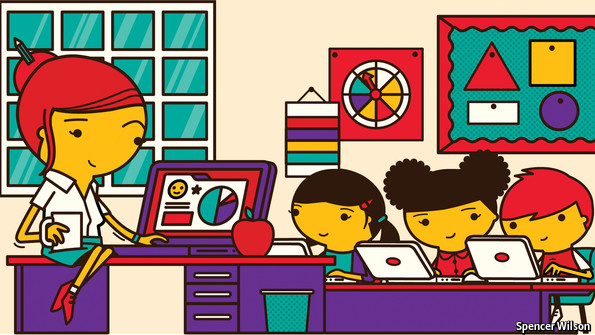New technology is poised to disrupt America’s schools, and then the world’s

IN A small school on the South Side of Chicago, 40 children between the ages of five and six sit quietly learning in a classroom. In front of each of them is a computer running software called Reading Eggs. Some are reading a short story, others building sentences with words they are learning. The least advanced are capturing all the upper- and lower-case Bs that fly past in the sky. As they complete each task they move through a cartoon map that shows how far they have progressed in reading and writing. Along the way they collect eggs which they can use to buy objects in the game, such as items to furnish their avatar’s apartment. Now and then a child will be taken aside for scheduled reading periods with one of the two monitoring teachers.
The director of North Kenwood-Oakland school says this sort of teaching, blending software with human intervention, helps her pupils learn faster. It also allows teachers at this school—which, like other charter schools, is publicly funded but has some freedom to teach as it likes—to spend more time teaching and less time marking written work and leading pupils through dull drills of words and numbers. On top of that the school gains an accurate,
